Motorola v635 Handleiding
Bekijk gratis de handleiding van Motorola v635 (30 pagina’s), behorend tot de categorie Mobiel. Deze gids werd als nuttig beoordeeld door 16 mensen en kreeg gemiddeld 4.5 sterren uit 8.5 reviews. Heb je een vraag over Motorola v635 of wil je andere gebruikers van dit product iets vragen? Stel een vraag
Pagina 1/30

Welcome - 1
Welcome
Welcome to the world of Motorola digital wireless communications!
We are pleased that you have chosen this Motorola GSM wireless
phone.
Left Soft Key
Perform function
in lower left
display.
Volume Keys
Camera Key
Voice Key
Headphone
Connector
Smart Key
Power & End
Key
Turn phone
on/off, end calls,
exit menu
system.
Menu Key
Send Key
Make & answer
calls.
Browser Key
Right Soft Key
Perform function
in lower right
display.
5-Way
Navigation Key
Scroll to and
select items.
Accessory
Connector
2-Welcome
www.motorola.com
MOTOROLA and the Stylised M Logo are registered in the US Patent &
Trademark Office. All other product or service names are the property of their
respective owners. © Motorola, Inc., 2004.
The Bluetooth trademarks are owned by their proprietor and used by Motorola,
Inc. under licence.
Java and all other Java-based marks are trademarks or registered trademarks
of Sun Microsystems, Inc. in the U.S. and other countries.
The information contained in Motorola's user's guides is believed to be correct
at the time of printing. Motorola reserves the right to change or modify any
information or specifications without notice. The contents of Motorola’s user's
guides are provided “as is.” Except as required by applicable law, no warranties
of any kind, either express or implied, including, but not limited to, the implied
warranties of merchantability and fitness for a particular purpose, are made in
relation to the accuracy, reliability, or contents of this guide.
Software Copyright Notice
The Motorola products described in this manual may include copyrighted
Motorola and third-party software stored in semiconductor memories or other
media. Laws in the United States and other countries preserve for Motorola
and third-party software providers certain exclusive rights for copyrighted
software, such as the exclusive rights to distribute or reproduce the
copyrighted software. Accordingly, any copyrighted software contained in the
Motorola products may not be modified, reverse-engineered, distributed, or
reproduced in any manner to the extent allowed by law. Furthermore, the
purchase of the Motorola products shall not be deemed to grant either directly
or by implication, estoppel, or otherwise, any licence under the copyrights,
patents, or patent applications of Motorola or any third-party software provider,
except for the normal, non-exclusive, royalty-free licence to use that arises by
operation of law in the sale of a product.
While Products specifications and features may be subject to change without
notice, we are making every possible effort to ensure that user manuals are
updated on a regular basis to reflect product functionality revisions. However,
in the unlikely event that your manual version does not fully reflect the core
functionality of your product, please let us know. You may also be able to
access up-to-date versions of our manuals in the consumer section of our
Motorola web site, at http://www.motorola.com.

Contents - 3
Contents
SafetyandGeneralInformation.........................6
GettingStarted......................................13
AboutThisGuide...................................13
InstallingtheSIMandMemoryCards...................13
BatteryTips.......................................15
InstallingtheBattery ................................16
ChargingtheBattery................................17
Turning Your Phone On . .............................17
AdjustingVolume...................................18
MakingaCall......................................18
AnsweringaCall...................................19
Viewing Your Phone Number. . . .......................19
HighlightFeatures...................................20
Using a Removable Memory Card......................20
UsingtheMemoryCardasaUSBDrive.................21
Storing Protected Content on Your Phone's
MemoryCard......................................22
Taking and Sending a Photo . . . .......................23
RecordingVideoClips...............................26
SendingaMultimediaMessage........................28
Receiving a Multimedia Message ......................30
Using the Phonebook . . .............................31
Learning to Use Your Phone...........................34
UsingtheDisplay...................................34
Usingthe5-WayNavigationKey.......................38
Using Menus . . ....................................39
4-Contents
EnteringText......................................42
UsingtheSmartKey................................52
UsingtheExternalDisplay............................52
UsingtheHandsfreeSpeaker.........................52
Changing a Code, PIN, or Password....................53
LockingandUnlockingYourPhone.....................53
If You Forget a Code, PIN, or Password . . . ..............55
Setting Up Your Phone ...............................56
Storing Your Name and Phone Number . . . ..............56
Setting the Time and Date. ...........................56
SettingaRingStyle.................................56
SettingAnswerOptions..............................57
Setting a Wallpaper Image ...........................57
Setting a Screen Saver Image.........................59
SettingDisplaySkin.................................59
SettingDisplayBrightness............................60
AdjustingtheBacklight ..............................60
SettingDisplayTimeout..............................60
ConservingBatteryPower............................60
Calling Features. . . ..................................61
Changing the Active Line. . ...........................61
RediallingaNumber ................................61
UsingAutomaticRedial..............................61
UsingCallerID.....................................62
CancellinganIncomingCall ..........................63
TurningOffaCallAlert ..............................63
CallinganEmergencyNumber........................63
Dialling International Numbers.........................64
ViewingRecentCalls................................64
ReturninganUnansweredCall........................65
Contents - 5
Using the Notepad ..................................66
AttachingaNumber.................................66
Calling With Speed Dial . .............................66
CallingWith1-TouchDial.............................67
UsingVoicemail....................................67
UsingCallWaiting..................................68
PuttingaCallOnHold...............................69
TransferringaCall..................................69
Phone Features .....................................71
MenuMap........................................71
FeatureQuickReference.............................73
SpecificAbsorptionRateData.........................92
Index..............................................94

6- Safety and General Information
Safety and General Information
IMPORTANT INFORMATION ON SAFE AND EFFICIENT
OPERATION. READ THIS INFORMATION BEFORE USING
YOUR PHONE.
The information provided in this document supersedes the general
safety information in user guides published prior to
December 1, 2002.
Exposure To Radio Frequency (RF) Energy
Your phone contains a transmitter and a receiver. When it is ON, it
receives and transmits RF energy. When you communicate with
your phone, the system handling your call controls the power level
at which your phone transmits.
Your Motorola phone is designed to comply with local regulatory
requirements in your country concerning exposure of human
beings to RF energy.
Operational Precautions
To assure optimal phone performance and make sure human
exposure to RF energy is within the guidelines set forth in the
relevant standards, always adhere to the following procedures.
External Antenna Care
Use only the supplied or Motorola-approved replacement antenna.
Unauthorised antennas, modifications, or attachments could
damage the phone.
Do NOT hold the external antenna when the phone is IN USE.
Holding the external antenna affects call quality and may cause the
phone to operate at a higher power level than needed. In addition,
use of unauthorised antennas may result in non-compliance with
the local regulatory requirements in your country.
Safety and General Information - 7
Phone Operation
When placing or receiving a phone call, hold your phone as you
would a wireline telephone.
Body-Worn Operation
To maintain compliance with RF energy exposure guidelines, if you
wear a phone on your body when transmitting, always place the
phone in a Motorola-supplied or approved clip, holder, holster,
case, or body harness for this phone, if available. Use of
accessories not approved by Motorola may exceed RF energy
exposure guidelines. If you do not use one of the body-worn
accessories approved or supplied by Motorola, and are not using
the phone held in the normal use position, ensure the phone and its
antenna are at least 1 inch (2.5 centimetres) from your body when
transmitting.
Data Operation
When using any data feature of the phone, with or without an
accessory cable, position the phone and its antenna at least 1 inch
(2.5 centimetres) from your body.
Approved Accessories
Use of accessories not approved by Motorola, including but not
limited to batteries and antenna, may cause your phone to exceed
RF energy exposure guidelines. For a list of approved Motorola
accessories, visit our website at
www.Motorola.com
.
RF Energy Interference/Compatibility
Note: Nearly every electronic device is susceptible to RF energy
interference from external sources if inadequately shielded,
designed, or otherwise configured for RF energy compatibility. In
some circumstances your phone may cause interference.
8- Safety and General Information
Facilities
Turn off your phone in any facility where posted notices instruct you
to do so. These facilities may include hospitals or health care
facilities that may be using equipment that is sensitive to external
RF energy.
Aircraft
When instructed to do so, turn off your phone when on board an
aircraft. Any use of a phone must be in accordance with applicable
regulations per airline crew instructions.
Medical Devices
Pacemakers
Pacemaker manufacturers recommend that a minimum separation
of 6 inches (15 centimetres) be maintained between a handheld
wireless phone and a pacemaker.
Persons with pacemakers should:
•ALWAYS keep the phone more than 6 inches (15 centimetres)
from your pacemaker when the phone is turned ON.
•NOT carry the phone in the breast pocket.
•Use the ear opposite the pacemaker to minimise the potential
for interference.
•Turn OFF the phone immediately if you have any reason to
suspect that interference is taking place.
Hearing Aids
Some digital wireless phones may interfere with some hearing aids.
In the event of such interference, you may want to consult your
hearing aid manufacturer to discuss alternatives.
Other Medical Devices
If you use any other personal medical device, consult the
manufacturer of your device to determine if it is adequately
shielded from RF energy. Your GP may be able to assist you in
obtaining this information.
Safety and General Information - 9
Use While Driving
Check the laws and regulations on the use of phones in the area
where you drive. Always obey them.
When using your phone while driving, please:
•Give full attention to driving and to the road.
•Use hands-free operation, if available.
•Pull off the road and park before making or answering a call if
driving conditions so require.
Operational Warnings
For Vehicles With an Air Bag
Do not place a phone in the area over an air bag or in the air bag
deployment area. Air bags inflate with great force. If a phone is
placed in the air bag deployment area and the air bag inflates, the
phone may be propelled with great force and cause serious injury
to occupants of the vehicle.
Potentially Explosive Atmospheres
Turn off your phone prior to entering any area with a potentially
explosive atmosphere, unless it is a phone type especially qualified
for use in such areas and certified as “Intrinsically Safe.” Do not
remove, install, or charge batteries in such areas. Sparks in a
potentially explosive atmosphere can cause an explosion or fire
resulting in bodily injury or even death.
Note: The areas with potentially explosive atmospheres referred to
above include fuelling areas such as below decks on boats, fuel or
chemical transfer or storage facilities, areas where the air contains
chemicals or particles, such as grain, dust, or metal powders.
Areas with potentially explosive atmospheres are often but not
always posted.
Product specificaties
| Merk: | Motorola |
| Categorie: | Mobiel |
| Model: | v635 |
Heb je hulp nodig?
Als je hulp nodig hebt met Motorola v635 stel dan hieronder een vraag en andere gebruikers zullen je antwoorden
Handleiding Mobiel Motorola

23 December 2022

17 Augustus 2022

15 Augustus 2022

16 Augustus 2022

16 Augustus 2022

15 Augustus 2022

17 Augustus 2022

12 Februari 2022

15 Augustus 2022

16 Augustus 2022
Handleiding Mobiel
- Sony Ericsson
- Real Phone
- Bosch
- Crosscall
- Peaq
- Hiptop
- Emporia
- Medion
- Ecom
- Nec
- Huawei
- Samsung
- Elson
- Sunstech
- O2
Nieuwste handleidingen voor Mobiel

28 September 2024

13 November 2024
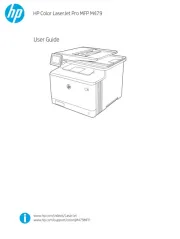
14 Februari 2024
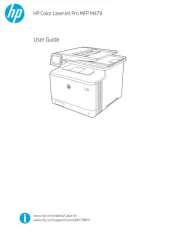
14 Februari 2024
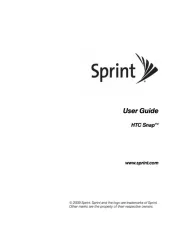
14 Februari 2024
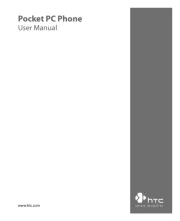
14 Februari 2024
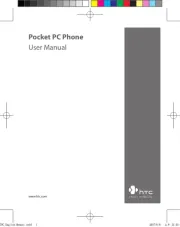
14 Februari 2024

14 Februari 2024

23 Oktober 2023

23 Oktober 2023